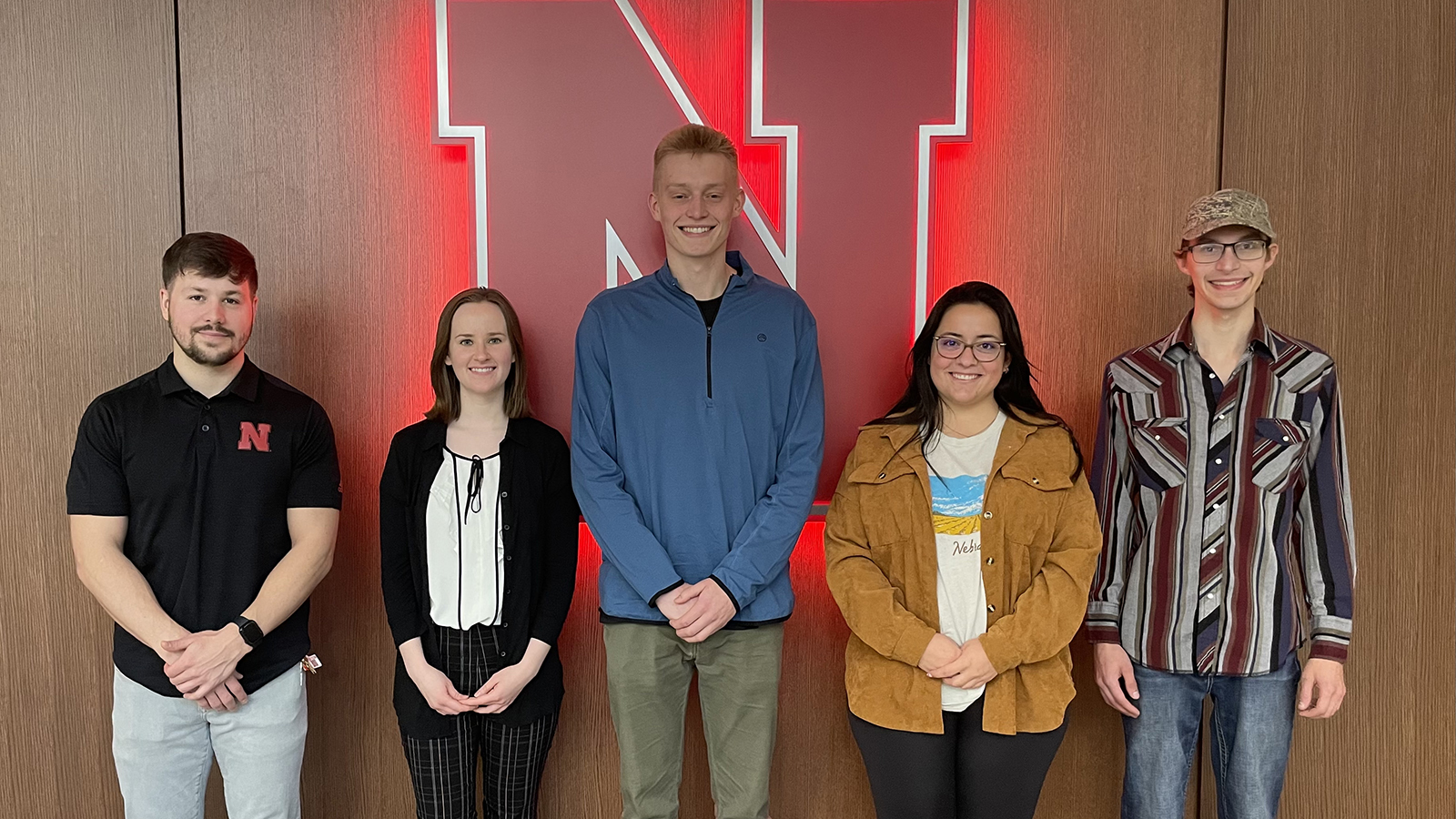Stormwater BMP Implementation for Douglas County Environmental Services
Biological Systems Engineering
Team Members
Maddie Carpenter, senior, biological systems engineering
Elise Gamble, senior, biological systems engineering
Thomas Hudson, senior, biological systems engineering
Trevor Kaslon, senior, biological systems engineering
Andrew Weigel, senior, biological systems engineering
Faculty supervisor
Terry Howell
This team of biological systems engineering students has created a design for sustainable stormwater management for the Douglas County Environmental Services building in Omaha, Nebraska. The design consists of multiple green stormwater treatment practices that capitalize on the natural filtration that plants can provide for pollutants.
Maddie Carpenter discussed the team’s project and the senior design capstone process:
Q: What particular roles do each team member perform?
Carpenter: I am the project manager, and I handle all organization/deadlines, stakeholder communication, and ensure the execution of final decisions regarding the project. Thomas is the facilitator, handling the decision-making process of the group while working to implement key design features with team satisfaction in mind. Elise is the deliverables specialist, and ensures the deliverables for the project are on par with client and professor expectations. Trevor is our conceptualist, helping to generate ideas for the design and with their implementation. Andrew is the technician, and helps to handle the technical aspects of the project and performs engineering analysis through programs such as ArcGIS.
All group members generally work together on various aspects of the project to produce a final product.
Q: How did this team come to be working on this project? Were you assigned by a faculty advisor or did you have to come up with the idea? If the latter, how did you learn about this need/issue/problem?
Carpenter: This project was chosen from a list of possible projects that were given to us by our faculty advisors.
Q: Are you working with a client outside the College of Engineering?
Carpenter: Our client is Stacy Gillman, the Stormwater Coordinator and Floodplain Administrator for Douglas County Environmental Services in Omaha, Nebraska.
Q: What is the team’s experience in working with the client? How much are you learning about being an engineer from this part of the process?
Carpenter: We have had a wonderful experience working with our client. She has been very open to our ideas and has allowed us to have free reign with this project. We are learning that the most obvious designs are not always the best for the client’s needs, and that communicating frequently is essential in creating a project that everyone is satisfied with. We are also learning that a key part of being an engineer is analyzing a situation at hand in an unbiased manner, and with best engineering judgement. Implementing a “best management practice” is about choosing what design is best to meet criteria and constraints, not necessarily what is the cheapest or easiest.
Q: Describe the work experiences that took you from the beginning (your first moments as a team) to where the project is now.
Carpenter: Much of the time that we spent in the beginning was defining the problem that we had to solve. Our project has evolved in many ways, with preliminary designs continuously being cycled through as new information arose. That’s why it is so important to fully define the problem before you begin to design features that may end up being unnecessary.
Q: How will your design have an impact on people or the world?
Carpenter: Our project will be a showing of Douglas County’s commitment to being a leader in sustainable practices. Our design will reduce the number of pollutants that enter city storm drains from the site as well as reduce the quantity of stormwater that enters storm drains. We are implementing green infrastructure practices that tend to be best for the environment and improve the overall ecological community in that area.
Q: How has working on this project affected you and your decisions about the pathways you will take in engineering?
Carpenter: It has allowed us to all develop ourselves further as engineers. All of us are interested continuing to implement green practices into our future environmental designs. Several of our group members are going on to get jobs with environmental engineering firms, and some are looking to further study environmental engineering in grad school.
